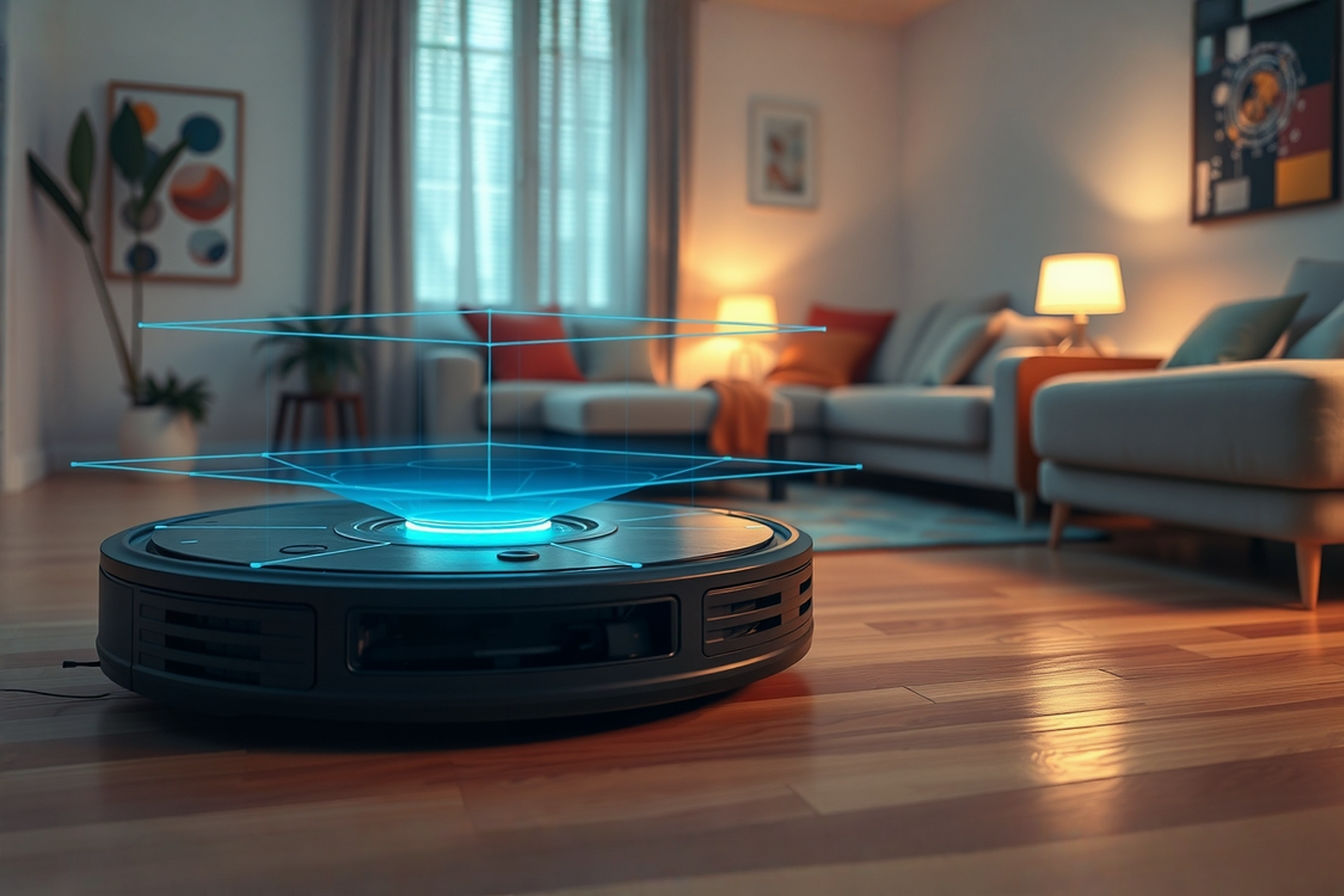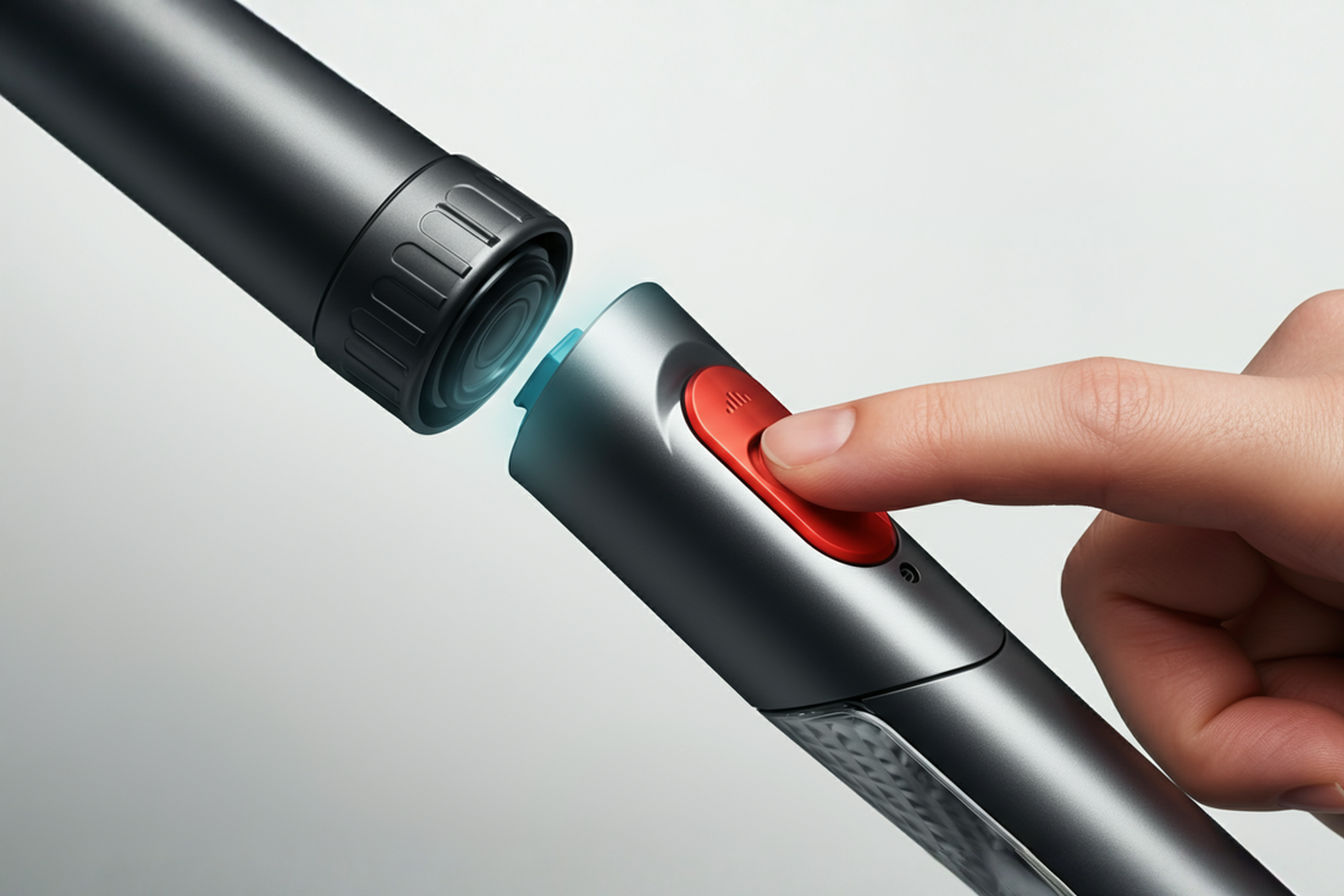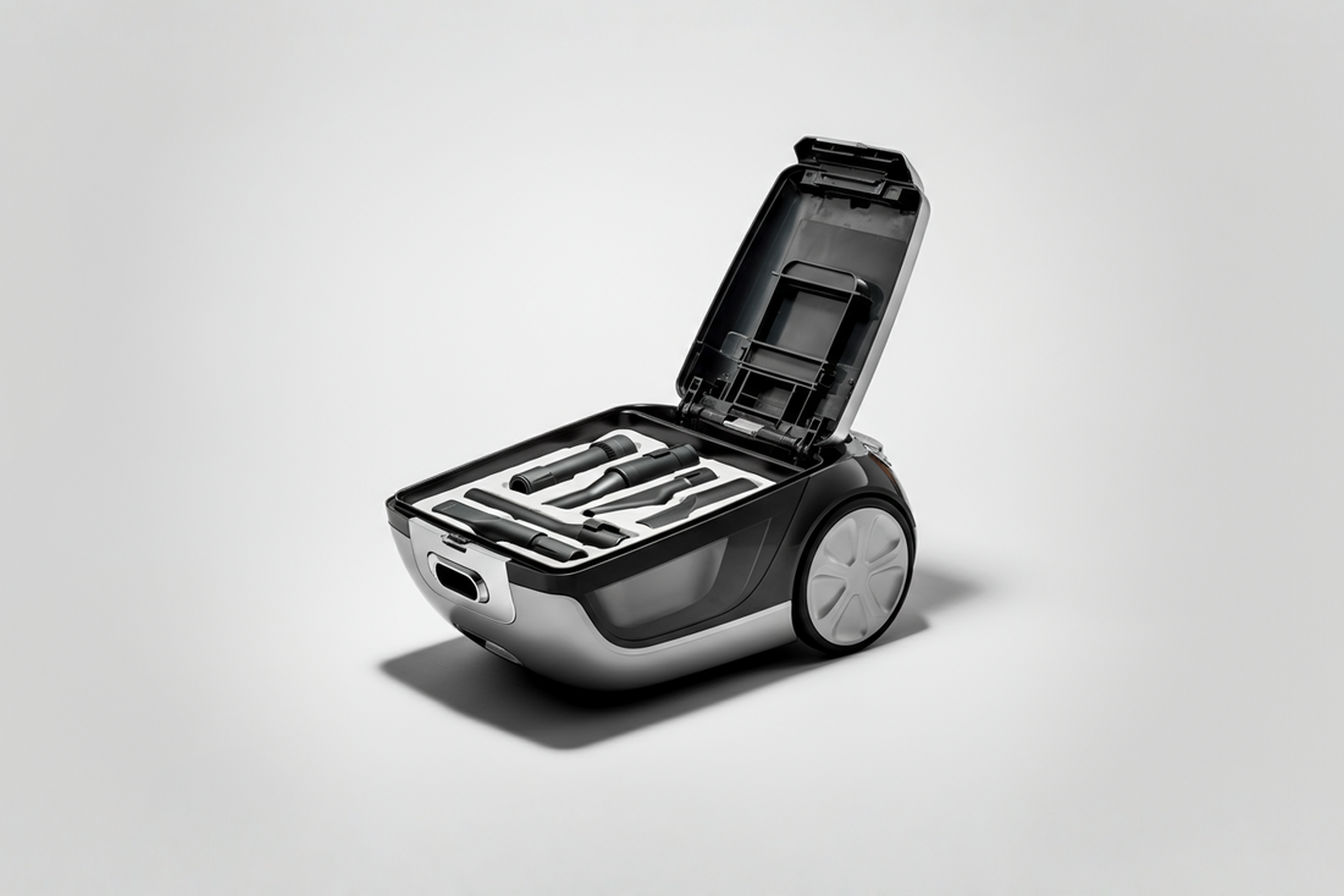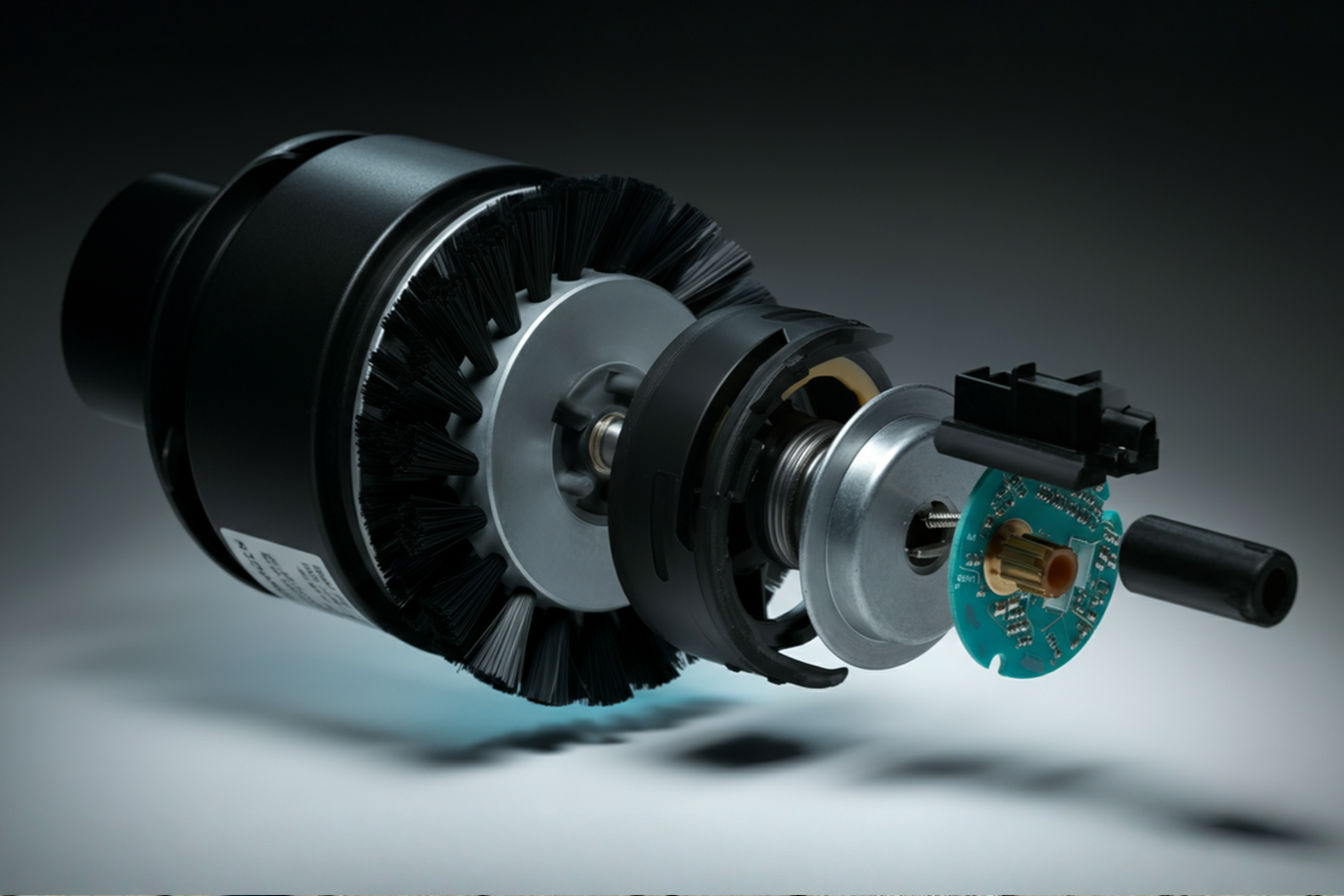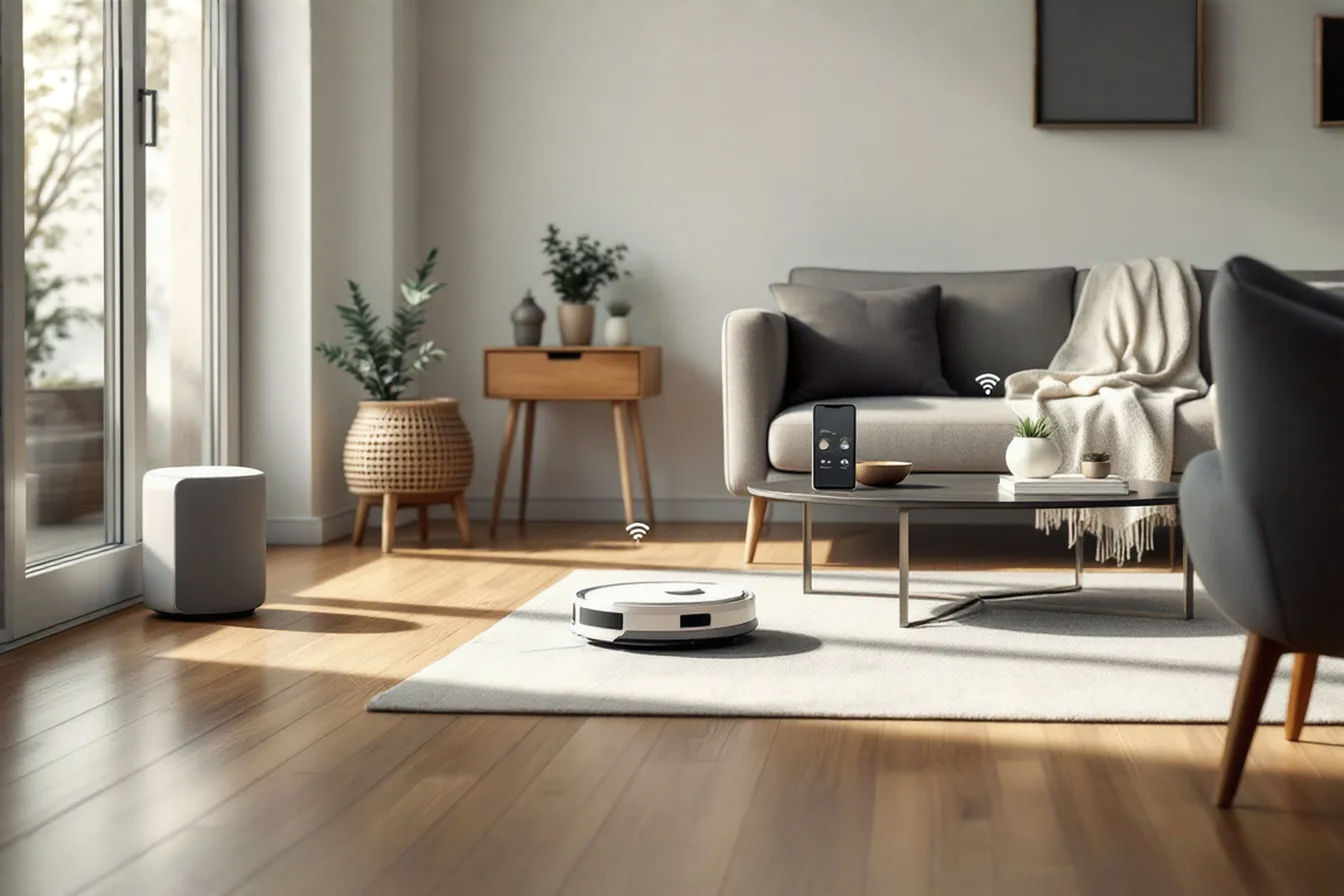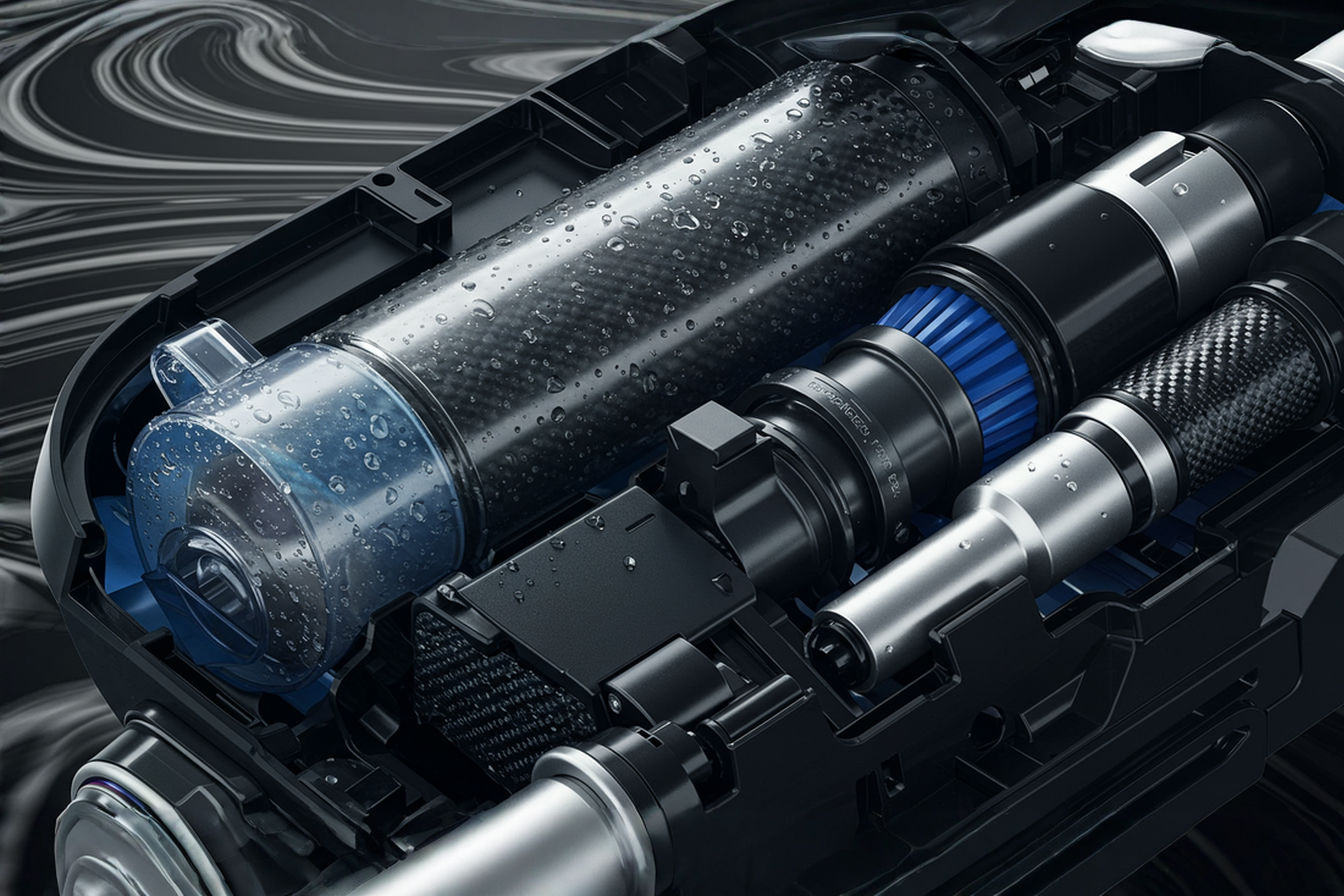AI-Driven Cleaning Optimization: How Smart Vacuums Are Changing Home Cleaning
AI-powered vacuums are changing how we clean our homes. Learn how this smart technology works, its benefits and limitations, and what the future holds for automated cleaning.
This post may contain affiliate links. If you make a purchase through these links, we may earn a commission at no additional cost to you.
Vacuum cleaners have come a long way from the bulky machines our grandparents pushed around. Today’s smart vacuums can clean your floors while you’re at work, avoid your sleeping dog, and even empty their own dust bins. Behind these amazing abilities is artificial intelligence (AI) and machine learning – the same technology powering smartphones and self-driving cars.
This shift toward smart cleaning is changing how we think about housework. No longer just a chore, vacuuming has become an automated task that happens in the background of our busy lives. But how exactly does this technology work, and where is it headed?
In this article, we’ll explore how AI is transforming vacuum cleaners, the benefits and challenges of this technology, and what the future holds for smart cleaning in our homes.
The Evolution of Vacuum Technology
The story of vacuum cleaners stretches back over a century. The first electric vacuum appeared in the early 1900s, giving homeowners a powered alternative to manual carpet sweepers. For decades after, the basic design remained similar – a motor, a suction system, and a human operator pushing it around.
The first big change came in the 1990s with the invention of robotic vacuums. These early models moved randomly across floors, bumping into furniture and walls to change direction. While groundbreaking, they often missed spots and frequently got stuck.
The real breakthrough happened when AI entered the picture. Instead of random movements, these new smart vacuums could:
- Create maps of your home
- Plan efficient cleaning paths
- Remember where they’d already cleaned
- Avoid obstacles without bumping into them
- Return to their charging stations when low on battery
“The difference between early robotic vacuums and today’s AI models is like comparing a flip phone to a smartphone,” says John Chen, a smart home technology expert. “They’re technically in the same category, but the capabilities are worlds apart.”
How AI Works in Modern Vacuum Cleaners
At its core, AI allows machines to learn from experience and make decisions based on what they’ve learned. In vacuum cleaners, this creates a device that gets smarter the more it cleans your home.
Sensing the Environment
Smart vacuums use several types of sensors to understand their surroundings:
- Optical sensors act like eyes, helping the vacuum see walls, furniture, and other obstacles
- Infrared sensors detect objects in low light and help prevent falls down stairs
- Lidar (light detection and ranging) creates detailed 3D maps by measuring reflected light
- Pressure sensors detect when the vacuum runs over different floor types
- Acoustic sensors can even detect the sound difference between dirt types
The vacuum collects this data during each cleaning session. The onboard computer processes this information to build an understanding of your home’s layout.
Learning and Adapting
The magic of machine learning happens when the vacuum uses this data to improve its performance. After several cleaning sessions, the vacuum learns:
- The most efficient paths through each room
- Where furniture usually sits
- Which areas tend to be dirtier
- What times of day are best for cleaning
- How to handle different floor surfaces
“Each time the vacuum cleans, it’s not just removing dirt – it’s gathering data to clean better next time,” explains Dr. Sarah Liu, an AI researcher. “It’s constantly refining its understanding of your home.”
This learning process makes the vacuum more efficient over time without any input from you. The system applies what it learns to make better decisions during future cleaning sessions.
Key Smart Features in Today’s AI Vacuums
Modern AI vacuums offer impressive features that make cleaning easier and more effective.
Advanced Mapping and Navigation
Smart vacuums create detailed maps of your home, allowing them to clean in organized patterns rather than random movements. Many can save multiple floor plans, making them useful in multi-level homes.
These maps often appear in smartphone apps, letting you see cleaning progress in real-time. You can mark “no-go zones” where you don’t want the vacuum to enter, like areas with pet bowls or delicate items.
Obstacle Detection and Avoidance
Early robot vacuums would bump into everything in their path. Today’s smart models can identify and avoid obstacles without touching them.
Advanced models can even recognize specific objects. They can tell the difference between a chair leg (which they can clean around) and a sock (which they should avoid to prevent getting stuck). Some can spot and avoid pet waste – a feature many pet owners appreciate!
Dirt and Dust Detection
Smart vacuums don’t just clean blindly. Many models include sensors that detect how much dirt is present in different areas. When they find a particularly dirty spot, they’ll spend extra time cleaning it.
Some high-end models can even identify the type of debris present and adjust suction power accordingly. They’ll increase power for larger particles like cereal and decrease it for dust, balancing cleaning power with battery life.
Surface Recognition and Adaptation
Different floors need different cleaning approaches. Hardwood requires gentle treatment, while carpets need stronger suction. AI vacuums can detect the surface they’re cleaning and automatically adjust.
“The vacuum knows when it moves from tile to carpet and can instantly increase suction power,” says home technology reviewer Mark Williams. “It’s like having a professional cleaner who intuitively knows how to handle each surface.”
Battery Management
AI helps vacuums use their battery power wisely. The system calculates the most efficient cleaning route and manages power usage to ensure the entire home gets cleaned before the battery runs low.
If the vacuum does run low on power, it can return to its charging station, recharge just enough, and then resume cleaning exactly where it left off.
The Benefits of AI-Driven Cleaning
The advantages of AI vacuum technology go beyond just convenience.
Improved Cleaning Efficiency
AI-powered vacuums clean more thoroughly than their non-smart counterparts. By mapping your home and planning logical paths, they ensure every accessible area gets cleaned.
Studies show that smart vacuums typically cover more floor area than randomly moving robots – about 98% coverage compared to 67% for non-AI models.
Time-Saving Automation
The most obvious benefit is the time saved. The average American spends about 30 minutes vacuuming each week – that’s 26 hours per year. With a smart vacuum, you can use that time for other activities.
Even better, you can schedule cleanings when you’re not home, so you never have to hear the vacuum running.
Personalized Cleaning Experiences
AI vacuums learn your preferences over time. They note which rooms you clean most often and which areas tend to get dirtiest. They can then focus more attention on high-traffic areas without being explicitly programmed to do so.
Many models connect to smartphone apps that let you customize cleaning schedules and preferences. You can set different cleaning intensities for different rooms or times of day.
Accessibility Benefits
For elderly people or those with mobility issues, smart vacuums provide independence. They offer a way to maintain a clean home without physical effort or assistance from others.
“My mother has arthritis and can’t push a regular vacuum anymore,” says Elena Garcia, whose mother uses a smart vacuum. “Her AI vacuum has allowed her to keep her house clean without pain or asking for help.”
Current Limitations and Challenges
Despite their impressive capabilities, AI vacuums aren’t perfect.
Navigation Complexities
While much better than early models, today’s smart vacuums can still struggle with certain home layouts. Very dark floors, highly reflective surfaces, and extremely cluttered areas can confuse their sensors.
Homes with many level changes, unusual architectural features, or very open floor plans might present challenges for some models.
Battery Life Constraints
Even with intelligent power management, battery life remains a limitation. Most models can clean for 60-120 minutes before needing to recharge, which might not be enough for larger homes in a single session.
Recharging typically takes 2-3 hours, meaning a complete cleaning cycle for a large home might take the better part of a day.
Cost Considerations
Smart vacuum technology doesn’t come cheap. While basic robot vacuums start around $200, models with advanced AI features typically cost $400-$1,000 or more.
“You’re not just paying for a vacuum,” explains consumer technology analyst James Wilson. “You’re investing in a smart home device with computing power comparable to some laptops.”
Privacy Concerns
Smart vacuums collect data about your home’s layout and your cleaning habits. This raises questions about privacy and data security.
Most manufacturers encrypt this data and use it only to improve the device’s performance, but concerns remain about potential breaches or data sharing with third parties.
The Future of AI in Vacuum Technology
The development of AI vacuum technology shows no signs of slowing down. Here’s what experts predict for the future.
Self-Improving Algorithms
Future vacuums will likely become even better at learning from experience. They might analyze cleaning results to determine what approaches work best for different situations.
“We’re moving toward systems that can evaluate their own performance and make improvements without human input,” says robotics engineer Dr. Michael Wei. “They’ll essentially become self-training.”
Advanced Object Recognition
The next generation of AI vacuums will recognize a wider range of objects with greater accuracy. They might distinguish between permanent furniture and items that are only temporarily on the floor.
Some companies are developing models that can recognize specific stain types and adapt cleaning methods accordingly. They might slow down for sticky spills or make multiple passes over tough spots.
Predictive Maintenance
Future AI systems will likely predict when maintenance is needed before problems occur. The vacuum might notice that the brush is rotating more slowly, indicating it needs cleaning, or that suction power is gradually decreasing, suggesting a filter change.
This predictive approach could extend the lifespan of these devices and ensure consistent cleaning performance.
Multi-Function Capabilities
The line between different cleaning devices is already blurring. Some models combine vacuuming and mopping functions. Future devices might handle an even wider range of cleaning tasks.
“We’re working toward a single device that can handle most floor cleaning needs,” says product developer Lisa Zhang. “The goal is a complete cleaning solution that requires minimal human intervention.”
Integration with Smart Homes
As smart home technology advances, vacuums will become more integrated with other systems. They might coordinate with your smart doorbell to clean while you’re away, or with your calendar to avoid cleaning during important events.
Your vacuum might even communicate with other smart appliances, like your washer and dryer, to coordinate a complete home maintenance schedule.
Environmental and Social Impact
The rise of AI cleaning technology affects more than just the cleanliness of our homes.
Energy Efficiency
Smart vacuums typically use less energy than traditional models. Their efficient cleaning paths reduce unnecessary movement, and their ability to adjust power based on need prevents waste.
Many manufacturers are focusing on sustainability, using recycled materials and designing for energy efficiency. Some models use renewable materials for brushes and other components.
Changing Cleaning Habits
AI-driven cleaning is changing our relationship with household chores. As more tasks become automated, we spend less time on routine maintenance and more on other activities.
“There’s a psychological benefit to delegating certain chores to technology,” notes psychologist Dr. Rebecca Torres. “It reduces the mental load associated with household management.”
Health Benefits
Better cleaning technology means cleaner homes, which can benefit people with allergies or respiratory issues. AI vacuums can maintain consistent cleaning schedules, reducing dust and allergen buildup.
Some high-end models include HEPA filters and air quality sensors, further improving indoor air quality.
Conclusion
AI-driven vacuum technology represents a significant shift in how we approach home cleaning. What began as a simple labor-saving device has evolved into a smart system that learns, adapts, and improves over time.
While today’s smart vacuums already offer impressive capabilities, the technology continues to advance rapidly. Future models will likely be even better at understanding our homes and cleaning needs, requiring less input and delivering better results.
For many homeowners, the question isn’t whether to adopt this technology, but when. As prices gradually decrease and capabilities increase, smart vacuums are becoming accessible to more people.
“We’re witnessing the early days of a cleaning revolution,” says technology futurist Dana Chen. “In the near future, we’ll look back at pushing a vacuum around the same way we now view washing clothes by hand – as a task that technology has happily made obsolete.”
Whether you’re ready to embrace an AI cleaning assistant or prefer the traditional approach, one thing is clear: the future of vacuuming will be smarter, more efficient, and increasingly hands-off.

